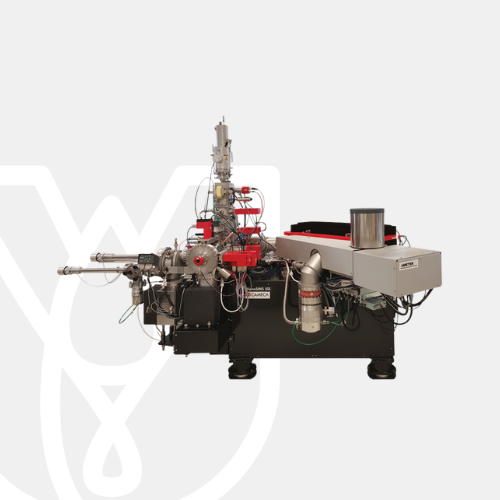
NanoSIMS 50L
SIMS Microprobe for Isotopic and Trace Element Analysis at High Spatial Resolution
The NanoSIMS 50L is a unique ion microprobe optimizing SIMS analysis performance at high lateral resolution. It is based on a coaxial optical design of the ion beam and the secondary ion extraction, and on an original magnetic sector mass analyzer with multicollection.
The NanoSIMS 50L delivers simultaneously key performance metrics that can only be obtained individually with any other known instrument or technique:
- High analysis spatial resolution (down to 50 nanometers)
- High sensitivity (ppm in element imaging)
- High Mass Resolution (M/dM),
- Parallel acquisition of seven masses
- Fast acquisition (DC mode, not pulsed)
- Analysis of electrically insulating samples without problem.
And thanks to recent improvements, isotope ratio reproducibility of a few tenths of permil can now be achieved.
Extended fields of applications
Microbiology:
The NanoSIMS 50L opens new possibilities for coupling phylogenetic identity (with FISH or El-FISH) and metabolic function (using stable isotope labeling) of single cells in studies of mixed microbial communities from the environment.
Cell biology:
50nm resolution and isotopic ratio capabilities of the NanoSIMS 50L allow intra-cellular measurement of accumulations and fluxes of molecules labeled with stable isotopes
Geology and space science:
The NanoSIMS 50L allows precise isotopic and elemental measurements of deep sub-micron areas, grains or inclusions from interplanetary dust particles, meteorites, and mineral sections. Working in multiple Faraday Cup configuration and with spot size of a few µm, it delivers isotope ratio measurements with precision and external reproducibility down to a few tenths of permil.
Materials Research:
Thanks to its high sensitivity at high mass resolution (no mass interference), the NanoSIMS 50L allows trace element (dopant) imaging & quantification with 50nm SIMS lateral resolution, even in electrically insulating materials. All elements except noble gases are accessible, from hydrogen to plutonium.
The NanoSIMS 50L was originally designed by Pr. G. Slodzian, University of Paris Sud, France.
For more information about this product, click here
